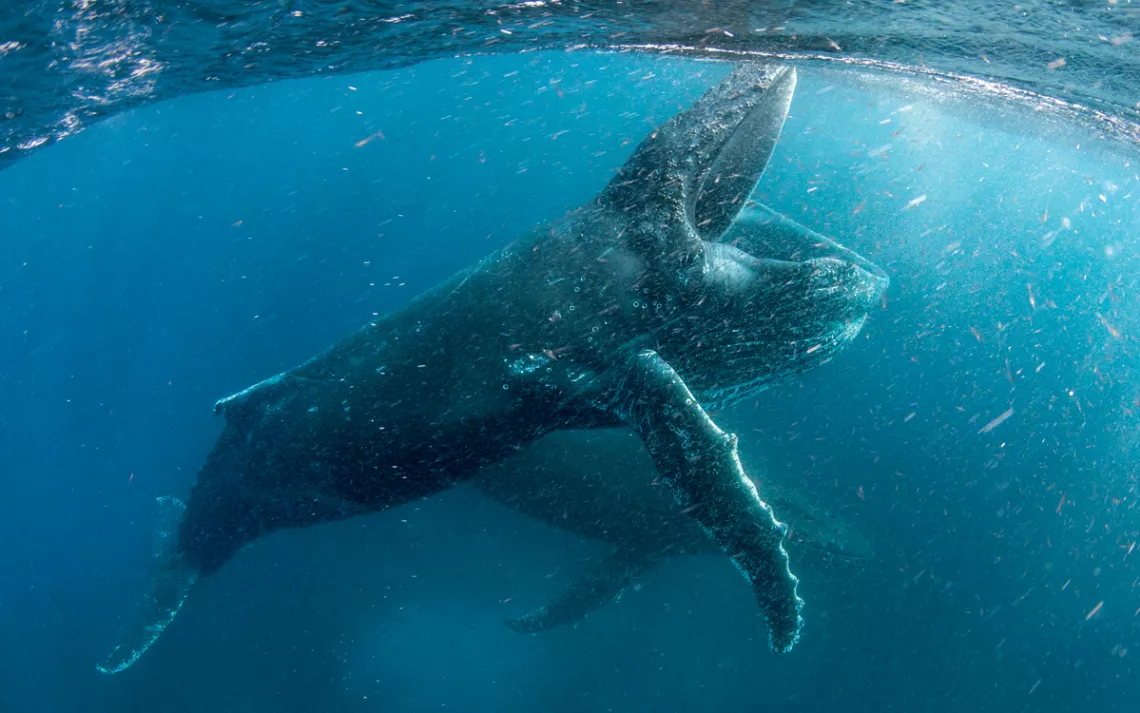Our Planet, Ourselves
Netflix is streaming an ambitious nature-doc series around the globe

Photo courtesy of Our Planet/Netflix/Steve Benjamin/Silverback Films
At first blush, the new eco-documentary series Our Planet feels oddly familiar. That's because Netflix, which produced the series in partnership with the World Wildlife Fund, hired a dream team of natural-history-production veterans to capture the breathtaking diversity of landscapes around the world—from the remote Arctic wilderness to South Africa's Hout Bay—with as much precision as possible.
Each episode of the eight-part series, which took four years to film and premiered in 190 countries in April, opens with the dulcet tones of who else but Sir David Attenborough. Over high-definition shots of lunar landscapes, the BBC's iconic 92-year-old narrator reminds viewers that the human population has more than doubled since we landed on the moon and that we must therefore take action to ensure that people, and nature, "survive and thrive."
Some 600 crew members, equipped with 4K camera technology, embedded themselves in the oceans and rainforests of 50 countries. In Mexico's Gulf of California, we find a blue whale playing with her calf, which at three tons still appears infantile on the screen. In tropical New Guinea, a rare bird of paradise gives new meaning to the phrase "fancy footwork." His whirling-dervish courting dance morphs him into unbirdlike shapes as his eyes turn from blue to yellow, all to a jazzy bossa nova soundtrack. In another episode, rough-skinned newts trek across old-growth forests to find partners in streams so they can fornicate vociferously—to the point of drowning.
The series is enthralling. But the point isn't to show off spectacular filmmaking. Capturing mountains, tundras, deserts, jungles, forests, grasslands, deep seas, and freshwater, Our Planet demonstrates how individual biomes factor into Earth's life-support system. Attenborough, meanwhile, translates complex issues such as climate change, overfishing, and deforestation into layman's terms and points to the real-world stories playing out all around us—whether it be that of the solitary albatross or the endangered orangutan. While these anecdotes are primarily for viewers' enjoyment, Attenborough takes occasional opportunities to expound on the issues: for example, explaining how populations of the once nearly extinct humpback whale recovered thanks to an international agreement and suggesting that global cooperation has the power to save the oceans.
Still, Our Planet manages to stay on the charming side of preachy. The conclusion isn't that we've ruined everything, but rather that nature's greatest power is its ability to recover. In showing how sunlight filters through wildfire-ravaged forest canopy to spur new life, for instance, and how recovering bird populations are reseeding a jungle, the series tells the deeper story of planetary resilience. Each episode concludes with an ask: Viewers are encouraged to visit ourplanet.com to learn more about boosting biomes through individual actions like getting involved in plastic-cleanup initiatives or committing to products that don't source palm oil.
The show uses the best of the nature-doc conventions—panoramic vistas, majestic music, close-ups with charismatic megafauna viewers can identify by name—to deliver the familiar beauty of the world around us. But more than its predecessors, Our Planet foregrounds the fact that this is a beauty we risk losing, and soon, if we don't take real action to protect it.
More Online
Read a behind-the-scenes Q&A: sc.org/our-planet-qa.
 The Magazine of The Sierra Club
The Magazine of The Sierra Club



